Arthur Ransome's Railways
David Carter
As published in the year 2000
Transcribed and with [annotations] and additional links by Rob Boden
Post-online-publication notes and observations: Notes and Observations


|
Accommodation for passengers was, on the main line, generally in corridor stock with separate compartments, each seating six in deep-cushioned and spacious comfort in the first class and six or eight in the rather less comfortable, but nonetheless quite passable thirds. (Second class survived only on boat trains from London to the South Coast.) Central corridor 'open' coaches were also used, sometimes for specially-built 'tourist' stock, as on the LNER [London North Eastern Railway], and almost always for dining cars. Local trains had non-corridor coaches with individual compartments each seating up to ten or even twelve passengers, and having doors at each side. A convenient and popular service offered by the railways, and almost certainly used by the Swallows on their journeys to and from the north, was known as 'Luggage in Advance', whereby for a fee of two shillings (10p!) a trunk would be collected from a passenger's home, and conveyed and delivered to his or her destination address, where it usually arrived before the passenger.
Many main-line trains carried coaches for different destinations, and the consequent re-making of these trains at junctions accounted for the length of the stops there. Through coaches might well end their journeys attached to, or actually become, local trains, but on a train like the 'Lakes Express' the main portion, complete with dining and kitchen cars, continued to Windermere, still hauled by its express locomotive, while sections were detached at various junctions and sent forward to Blackpool, Keswick, Whitehaven and Workington. |
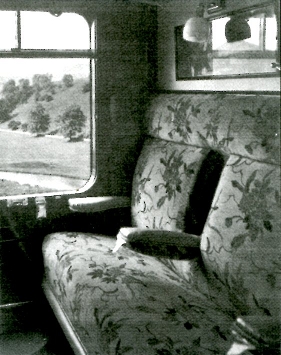
LMS 3rd class compartment, 1933 – typical of pre-war provision on main-line expresses. (1) |
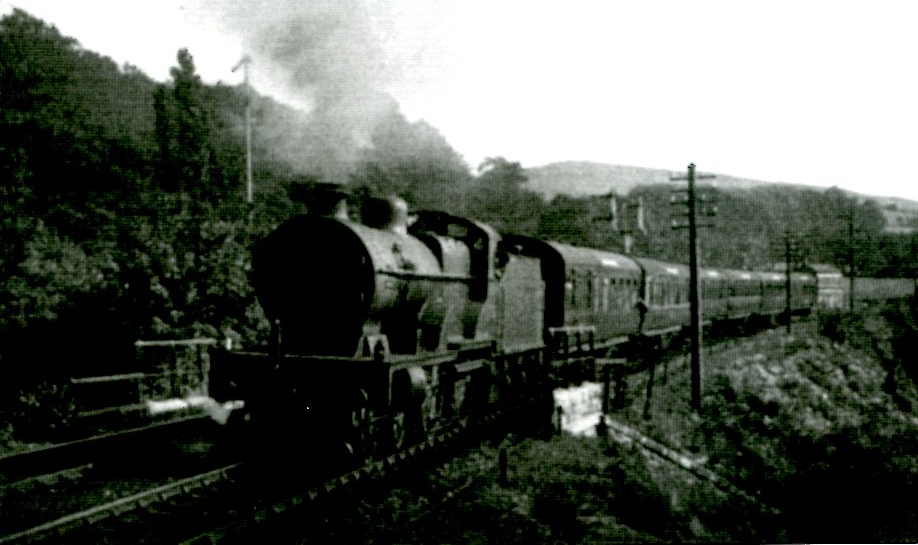
In 1935, the main portion of the down 'Lakes Express' sets out from Oxenholme along the Windermere branch behind LMS compound 4-4-0 No. 1174. Note the tall signal on the up main line at the foot of Grayrigg bank. The upper signals repeated the lower pair, and were designed to give drivers of descending trains ample warning of the situation at Oxenholme. The signal box on the right (Oxenholme No. 3) was demolished in 1942 as part of a new signalling programme. (2) |
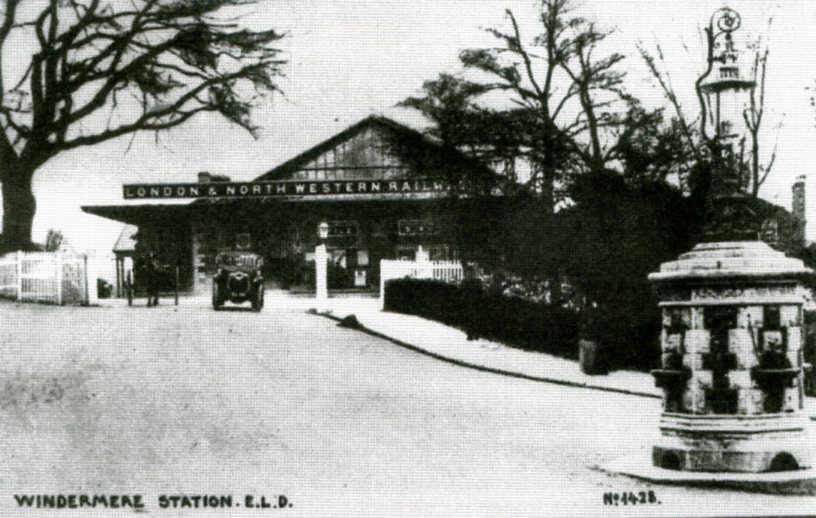
An earlier view of the entrance to Windermere Station prior to 1923; is this Rattletrap on her way to Beckfoot? (3) |
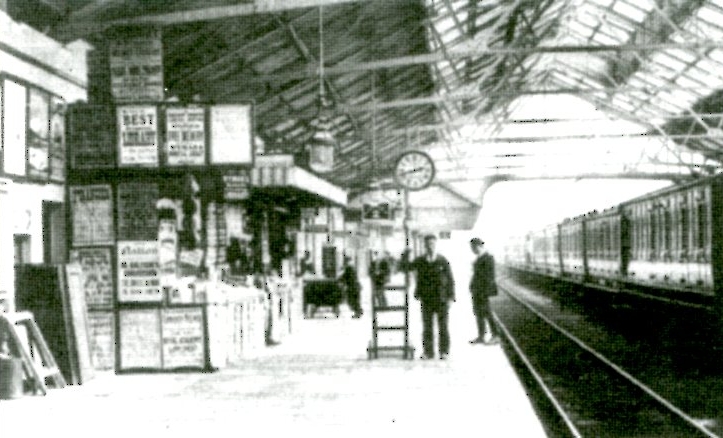
Interior of Windermere Railway Station looking along platform 2 in LNWR days [London North Western Railway- amalgamated into LMS on 1/1/1923] with Wyman's bookstall on the left. This platform was used by all main-line trains both arriving and departing. A sign marks the parcels office where Nancy searched in vain for Timothy. Apart from the posters, little changed before the station was converted into a supermarket in 1986. (4) |
|
LMS – the best way for smooth and comfortable travel Bowness pier in the 1920s with "Swift" (?) arriving in 1929 |
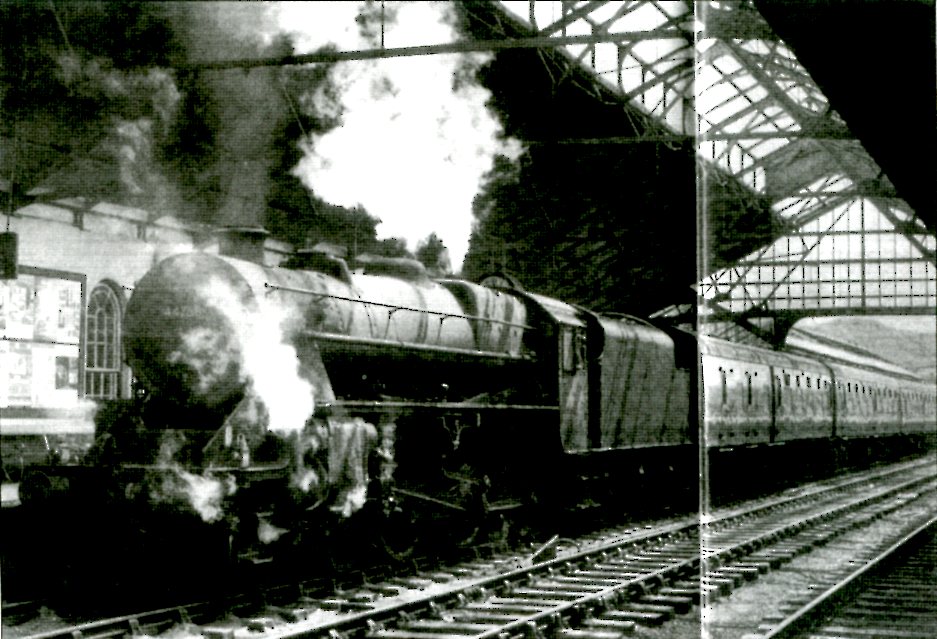
A 1957 view of the interior of Windermere station, taken from the platform opposite that in the previous picture. (5) |

Carnforth, showing the main-line platforms on the right and the subway leading to them (used by the GA on her way back to Leeds and Harrogate.) (The outer wall on the left has since been moved to accommodate the Barrow platform.) (6) |

Carnforth station looking towards Barrow. The view shows the platform and crossover road used by trains for the Furness line. Beyond may be seen the bay platform used by Midland Division trains for Leeds. The sign for the Refreshments Room is just visible. This is better known and one of the locations in the film Brief Encounter. (7) |
|
Railway postcard – view of Kendal from Oxenholme with Kanchenjunga in the background |
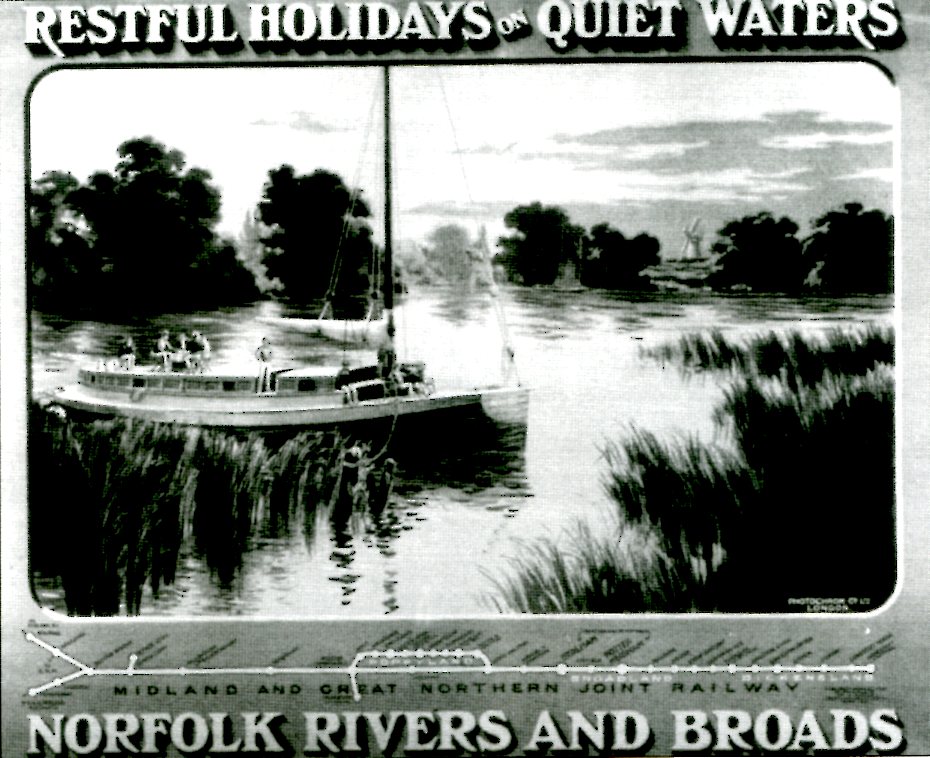
A pre-War poster (1914) advertising the peaceful delights of the Norfolk Broads – not a Hullabaloo in sight! (8) |

Thorpe Station at the time of its rebuilding in the 1880s. The Ds would have used the right-hand platform. (9) |

The latter part of the Ds' journey to Wroxham showing the stops. (10) |
CC probably has more railway clues than any of the other books, even though the story is almost exclusively about sailing and bird-watching. CC.1 opens by telling us that the Ds' train had stopped briefly at "Ipswich and Colchester and (a) few other stations" before its arrival at Norwich. The train had waited there for ten minutes before going on to Wroxham, where the stationmaster mentions Port and Starboard as having "had their dinners" by that time; in CC.2 Mrs Barrable has taken the Ds to lunch before joining the motor boat for the trip down river to the Teasel.
Thus we are looking for a semi-fast train from London, getting to Wroxham about lunchtime, and we find it in the 10.03 from Liverpool Street to Cromer, which stopped at Ilford, Chelmsford, Marks Tey, Colchester, Ipswich, Stowmarket, Diss and Forncett, arriving at Norwich at 1.09. It was due to leave Norwich at 1.17; perhaps it left a couple of minutes late that day, or perhaps Dorothea was just estimating the time, for we know how time can drag for children when they are waiting for some long-awaited event. If it were in fact late, that turned out to be a hidden bonus for Tom who, as it was, nearly missed it. It is not absolutely clear whether the train actually stopped again between Norwich and Wroxham. Ransome notes that after it had crossed the old river again, it was "slowing up at a station." This would have been Salhouse, [it would be Whitlingham Junction – RB] where that particular train stopped at 1.30 on Thursdays and Saturdays only, before its arrival at Wroxham at 1.34. True, Dick remarks on a heron "soon after they had passed Salhouse station", but Ransome's formulation is still unusual, for one would normally refer to "slowing up for a station" (i.e. where a speed limit could well be in force) or "stopping up at a station"; having "passed" a station could mean either, and so we cannot be sure on which day the Ds were travelling. However, we do know that Mr Farland was racing Flash that afternoon, so it was very probably the Saturday. 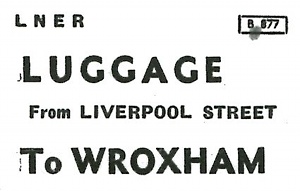
LNER Luggage Tag (11) |
|
We must hope that Mr Farland did catch his train to London when (CC.17) he had to rush away, leaving Port and Starboard to try to catch Teasel. He tells his clerk in Norwich that he is coming in to Norwich by car, and has "got to catch the 9.01" – but he must be confused because there was no 9.01 from Norwich to London at that time. The train he must have had in mind might have been the 8.51, a train with numerous stops, which arrived in London at 12.40, although had he been able to catch it, the 8.45 was a much faster restaurant car express, stopping only at Ipswich, and getting to London at 11.15. Is it possible that the express had been retimed, and AR was quoting the one with which he had been familiar at an earlier date? This seems unlikely, as CC was first published in 1934, at a period when retiming (accelerating) trains was most often done by delaying the departure time and keeping the same arrival time, rather than the other way round.
CC.18 makes reference to a train which "roared across" Breydon Bridge just after Teasel had passed through in the late afternoon of her first day's cruising. It would seem likely that this was the 5.28 from Lowestoft, due at Gorleston North at 5.56 and Yarmouth Beach at 6.03 [this was the Midland and Great Northern Railway station in Yarmouth]. In connection with bridges, Ransome also mentions a goods engine which crossed the first of the Yarmouth bridges just as Come Along, with Port and Starboard on board, passed at slack water in her vain pursuit of Teasel. The only possible hope of tracing this movement would lie in a working (as opposed to the public) timetable and this I was not able to find. [Working timetables are those used by railway operators to run the railway]. |
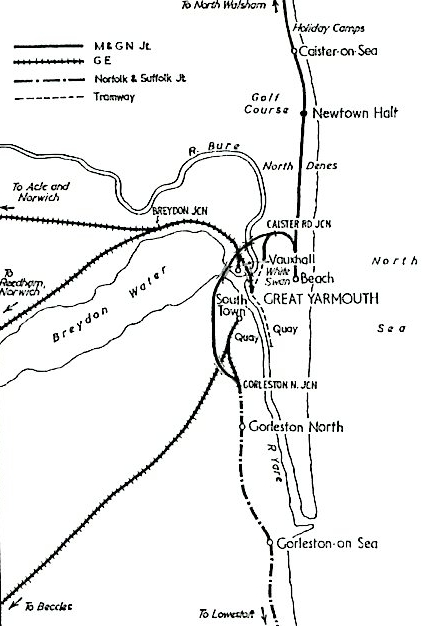
Breydon Water & Great Yarmouth. (12) |
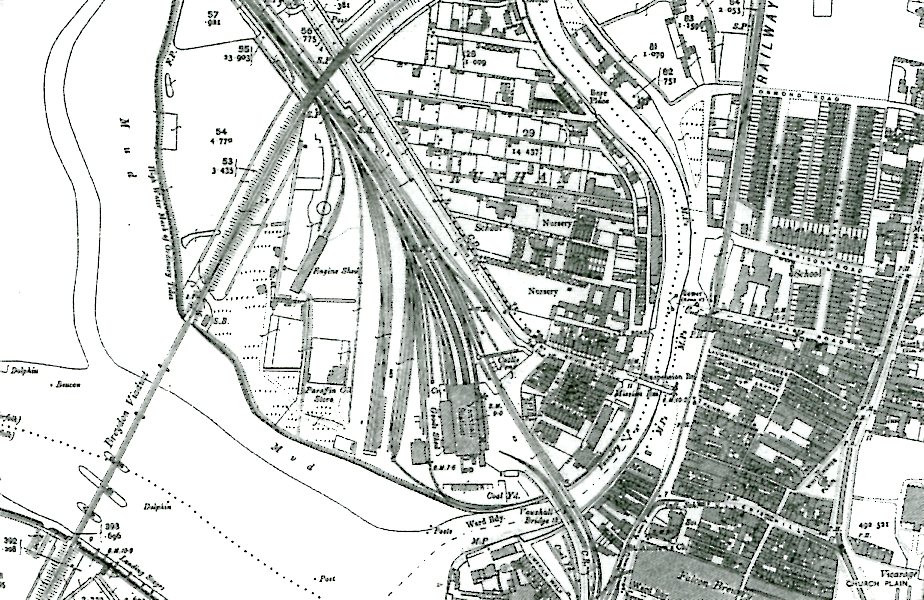
Breydon Bridge, otherwise known as the Breydon Water Viaduct of the Midland and Great Northern Joint Railway. The signal box is shown on the map above (S.B.) at the north end of the bridge. (13) 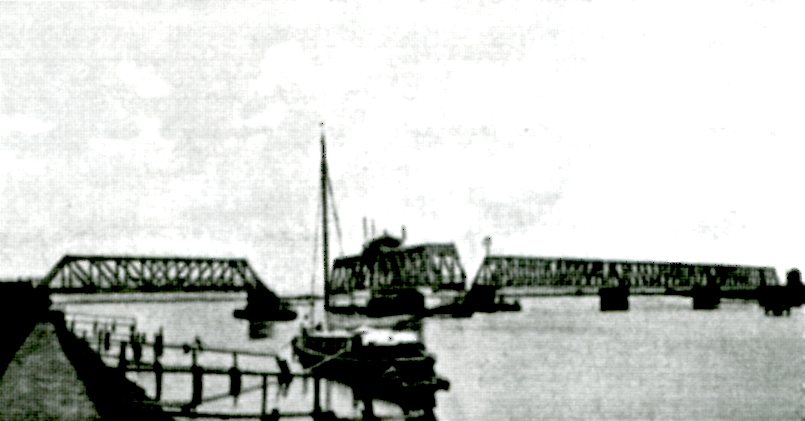
It is more likely that the wave came from the bridge operator, whose cabin is seen on the top of the opening span (above). (14) |

An ex-LNWR 4-4-2 tank engine used on the Windermere branch at Oxenholme shed. (15) |
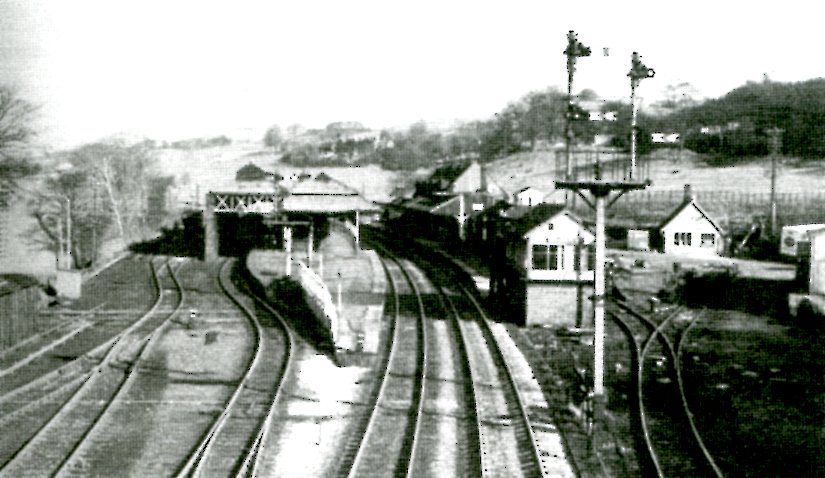
The southern approach to Oxenholme in 1968 showing the Windermere branch platform to the left. (16) |
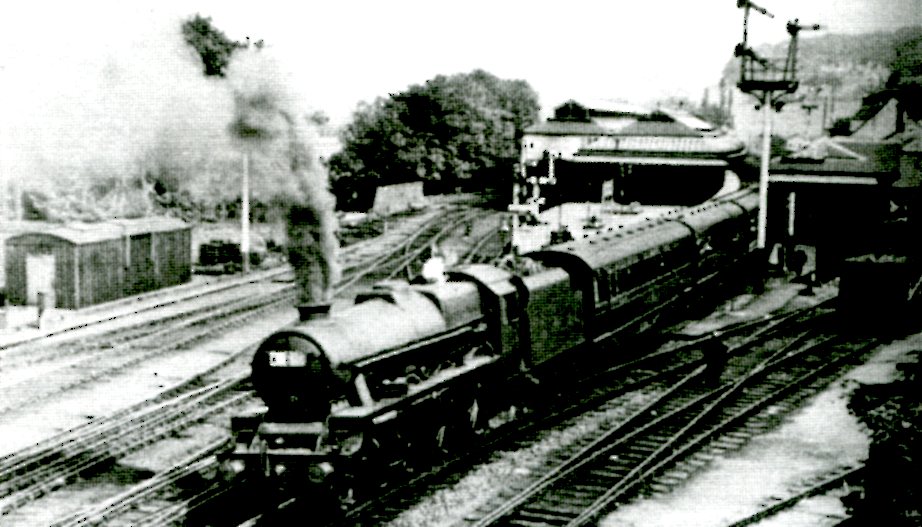
Oxenholme around 1940 with short platforms but full roofing. (17) |

A typical main line goods train headed by an ex-LNWR 0-8-0 passes Oxenholme No.3 box. The Windermere branch falls steeply away to the left. (18) |
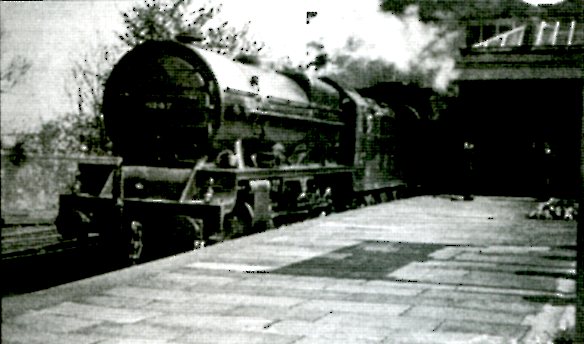
LMS No.6247 Courier (later renamed The Northamptonshire Regiment) picks up the Windermere-Euston carriages at Oxenholme's back platform for attachment to the 8.30am working from Carlisle to London. (19) |
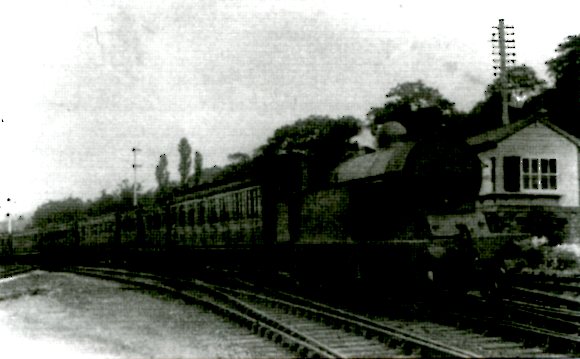
Ex. L&NW 4-4-2T No.6748 comes off the branch at Oxenholme with a return excursion. Some of the rolling stock is of remote antiquity. (20) |
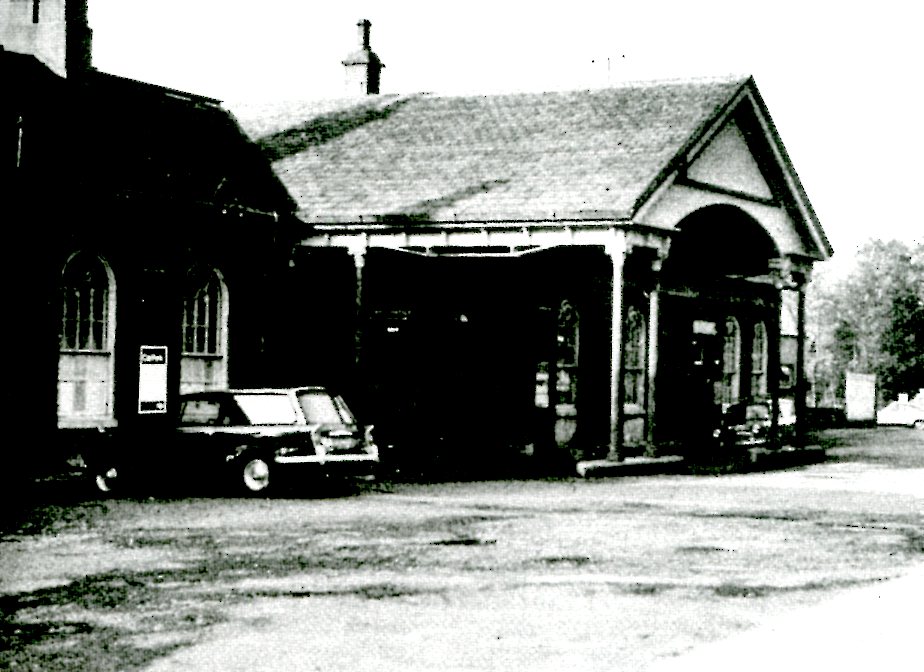
Windermere Station. The portico beneath which Rattletrap waited. (21) |
|
LNWR 4-4-2T engine Peter Owen Jones' painting of Oxenholme with mainline train arriving in 1934 A diesel multiple unit at Oxenholme pre electrification – in colour |

Leeds Central as the GA would have seen it on journeys to and from Harrogate. (22) |
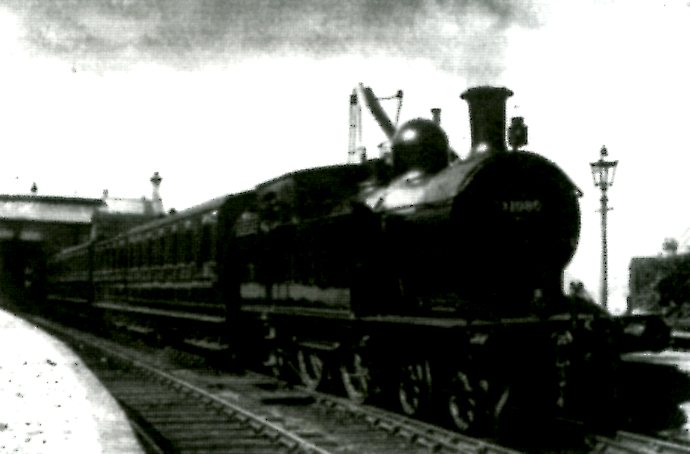
Lakeside, "the station at the foot of the lake." (23) |

Ulverston Station on the Carnforth-Barrow line; local trains for the Lakeside branch started from here. AR would have known this scene. (24) |
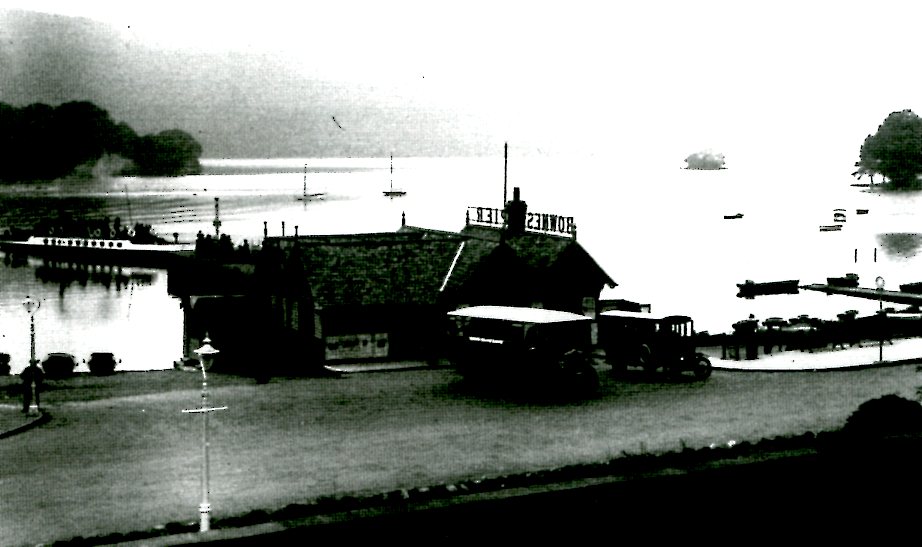
Rio Bay. Note the steamer's mode of arrival: "The steamer, with a great flurry of reversed propellers, was coming alongside the pier." (25) |
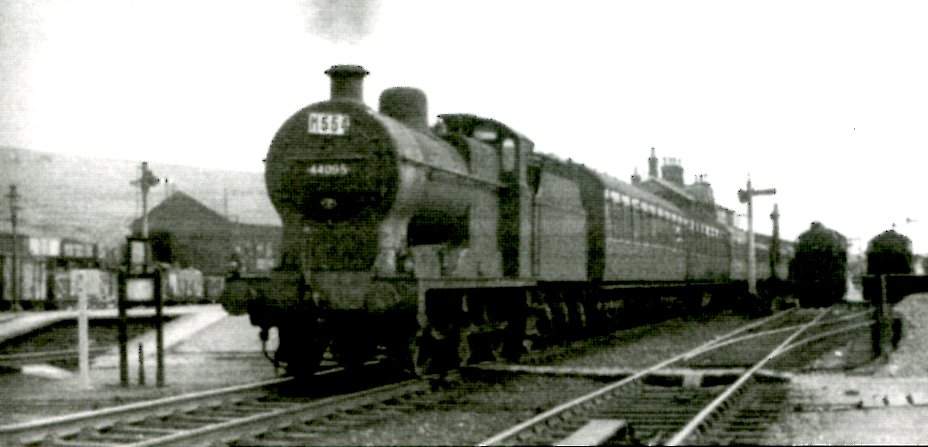
Hellifield (above) and Bell Busk (bellow) were on the Leeds-Carnforth and Morecambe line. (26) |
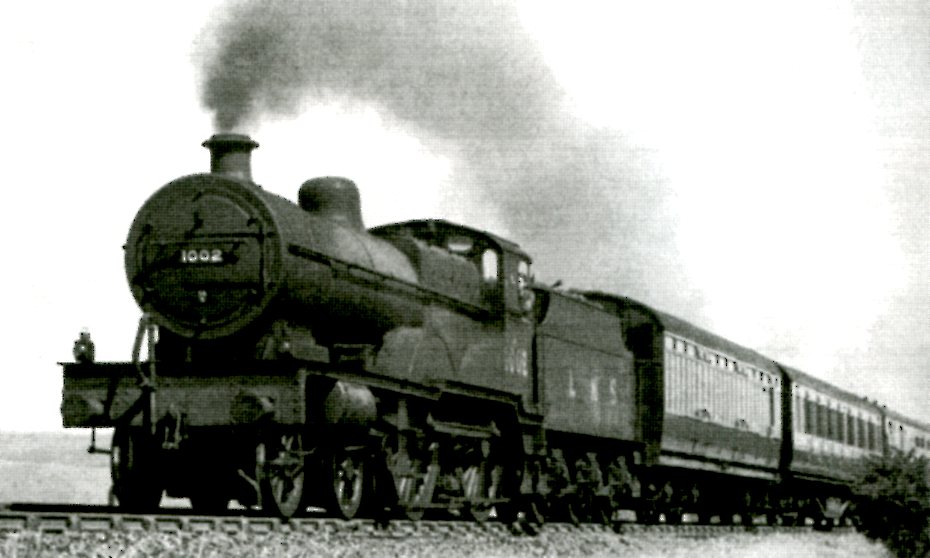
Bell Busk. (27) |
|
Windermere station in 1931 In LMS days when there were four platforms in use Bowness pier with a bus waiting for passengers The station at the bottom of the lake the combined steamer pier and the station building on the right |
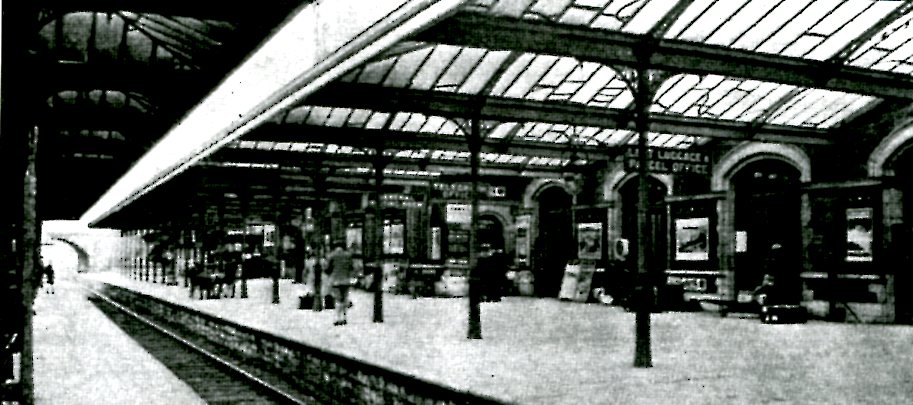
Ulverston Station looking towards Carnforth. AR would have used this station. (28) |
|
Acknowledgements The author, the Society, and All Things Ransome acknowledge the kindness of the following copyright holders in permitting the reproduction of their photographs: (1) - Atlantic Transport Publishers (2) - F R Hebron/Rail Archive Stephenson (3) - Bernard Matthews Collection (4) - Bernard Matthews Collection (5) - Atlantic Transport Publishers (6) - The Sankey Collection (7) - O S Nock/The Railway Magazine (15) - The LNWR Society (18) - The LNWR Society (20) - The LNWR Society (25) - The Sankey Collection (27) - Greenwood/Rail Archive Stephenson To the copyright holders of all other photographs, which the author was unable to discover or to contact, we offer our apologies, and thanks for having taken pictures which have helped to illustration this small publication. The illustration at the beginning, "Letting Fly", is from Pigeon Post by Arthur Ransome. Copyright © The Arthur Ransome Literary Estate. Reprinted by permission of David R. Godine, Publisher, Inc. and the Arthur Ransome Literary Executors. The illustration (11) of an LNER luggage label is taken from an original in the author's possession. The Ds' hand luggage could well have borne similar labels. Links to additional pictures on the internet were provided by Rob Boden in converting the booklet to digital format, and are intended to serve as a complement to the existing photographs and illustrations. All linked material, by reference and original copyrights, belong to the authors and publishers. |